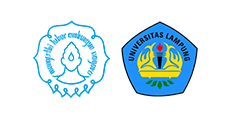The Influences of Problem-Based Learning Model with Fishbone Diagram to Students's Critical Thinking Ability
Abstract
Keywords
Full Text:
PDFReferences
Anthony, B., Doggett, M., Anthony, B., & Doggett, M. (2004). A Statistical Comparison of Three Root Cause Analysis Tools A Statistical Comparison of Three Root Cause Analysis Tools. Journal of Industrial Technology, 20(2), 1–9. Retrieved from www.nait.org Bellanca, J. (2009). Strategi dan Proyek Pembelajaran Aktif untuk Melibatkan Kecerdasan Siswa. Jakarta: Indeks. Chang, B. J. (2016). Problem-based learning in medical school : A student perspective. Annals of Medicine and Surgery, 12, 88–89. https://doi.org/10.1016/j.amsu.2016.11.011 Duch, B. J. (2001). Writing Problems for Deeper Understanding In The Power of Problem-Based Learning. Virginia: Stylus Publishing. Duplass, J. A., & Ziedler, D. L. (2002). Critical Thinking and Logical Argument. Social Education, 66(5), 10–14. Etiubon, R. U., & Ugwu, A. N. (2016). Problem-Based Learning and Students â€TM Academic Achievement on Thermodynamics ( A case study of University of Uyo , Akwa - Ibom state , Nigeria ). IOSR Journal of Research & Method in Education, 6(5), 36–41. Facione, P. A. (2015). Critical Thinking : What It Is and Why It Counts. Insight Assessment, 1–30. Retrieved from https://blogs.city.ac.uk/cturkoglu/files/2015/03/Critical-Thinking-Articles-w6xywo.pdf Firdaus, Kailani, I., Bakar, N. Bin, & Bakry. (2015). Developing Critical Thinking Skills of Students in Mathematics Learning, 9(3), 226–236. Hake, R. R. (1999). Analyzing Gain Scores (pp. 1–4). Retrieved from www.physics.indiana.edu/~sdi/AnalyzingChange-Gain.pdf Hou, S. (2014). Integrating Problem-based Learning with Community-engaged Learning in Teaching Program Development and Implementation, 2(1), 1–9. Hung, W. (2013). Problem-based Learning: A learning environment for enhancing learning transfer, 27. Ilie, G., & Ciocoiu, N. (2010). APPLICATION OF FISHBONE DIAGRAM TO DETERMINE THE RISK OF AN EVENT WITH MULTIPLE CAUSES. Management Research and Practice, 2(1), 1–20. Retrieved from researchgate.net Lenkauskaite, J., & Mazeikiene, N. (2012). Challenges of introducing PBL in higher education. Social Research, 2(27), 78. Retrieved from su.lt Mulyasa. (2014). Manajemen Pendidikan Karakter. Jakarta: Bumi Aksara. Nasir. (2014). FISHBONE STRATEGY IN TEACHING ENGLISH IN INDONESIA : A TOOL ORGANIZER FOR LEARNING EFL READING. The Second International Conference on Education and Language, 1(1), 160–165. Retrieved from http://artikel.ubl.ac.id/index.php/icel/article/view/277 OECD. (2016). PISA 2015 Results in Fokus. OECD Publishing PISA 2015, I(1), 1–16. Prayekti. (2016). Effect of PBL Model Versus Expository Model and Motivation to Achieve for Student’s Physic Learning Result of Senior High School at Class XI. Journal of Education and Practice, 7(1), 30–37. Retrieved from www.iiste.org Pucher, R., & Lehner, M. (2011). Project Based Learning in Computer Science ± A Review of More than 500 Projects. Procedia - Social and Behavioral Sciences, 29(2011), 1561–1566. https://doi.org/10.1016/j.sbspro.2011.11.398 Rath, J. F., Langenbahn, D. M., Simon, D., Sherr, R. L., Fletcher, J., & Diller, L. (2004). The construct of problem solving in higher level neuropsychological assessment and rehabilitation ଝ. Journal Elsevier Archives of Clinical Neuropsychology, 19(1), 613–635. https://doi.org/10.1016/j.acn.2003.08.006 Rohaeti, E. E. (2010). Critical and Creative Mathematical Thinking of Junior High School Student. Educationist Journal, 4(2), 99–106. Sanjaya, W. (2009). Strategi Pembelajaran Berorientasi Standar Proses Pendidikan. Jakarta: Kencana Prenada Media Grup. Saputri, S. (n.d.). Efektivitas PBL disertai diagram Fishbone Terhadap Kemampuan Berpikir Kritis Siswa Kelas X SMA N 1 Surakarta 2014/2015. Sebelas Maret. Simone, C. De, Lussier, J., & Hall, L. (2014). Problem-based learning in teacher education : Trajectories of change Faculty of Education. International Journal of Humanities and Social Science, 4(12), 17–29. Suciati. (2015). PROBLEM BASED LEARNING MODEL TOWARD STUDENTS ’ ACHIEVEMENT. In Proceeding of International On Research, Implementation, and Education (pp. 41–46).17 May 2015 Trochim, W. M. . (2006). Quasi Experimental Design. Retrieved from www.socialresearch.com Wong, K. C. (2011). Using an Ishikawa diagram as a tool to assist memory and retrieval of relevant medical cases from the medical literature. Journal of Medical Case Report, 5(120), 2–4. Wynn, C., Mosholder, R., & Larsen, C. (2014). Measuring the effects of problem-based learning on the development of postformal thinking skills and engagement of first-year learning community students. Learning Communities Research and Practice, 2(2), 1–31. Zohar, A., & Dori, Y. J. (2003). Higher Order Thinking Skills and Low Achieving Students: Are They Mutually Exclusive. Journal of the Learning Sciences, 12(2), 145–181.













